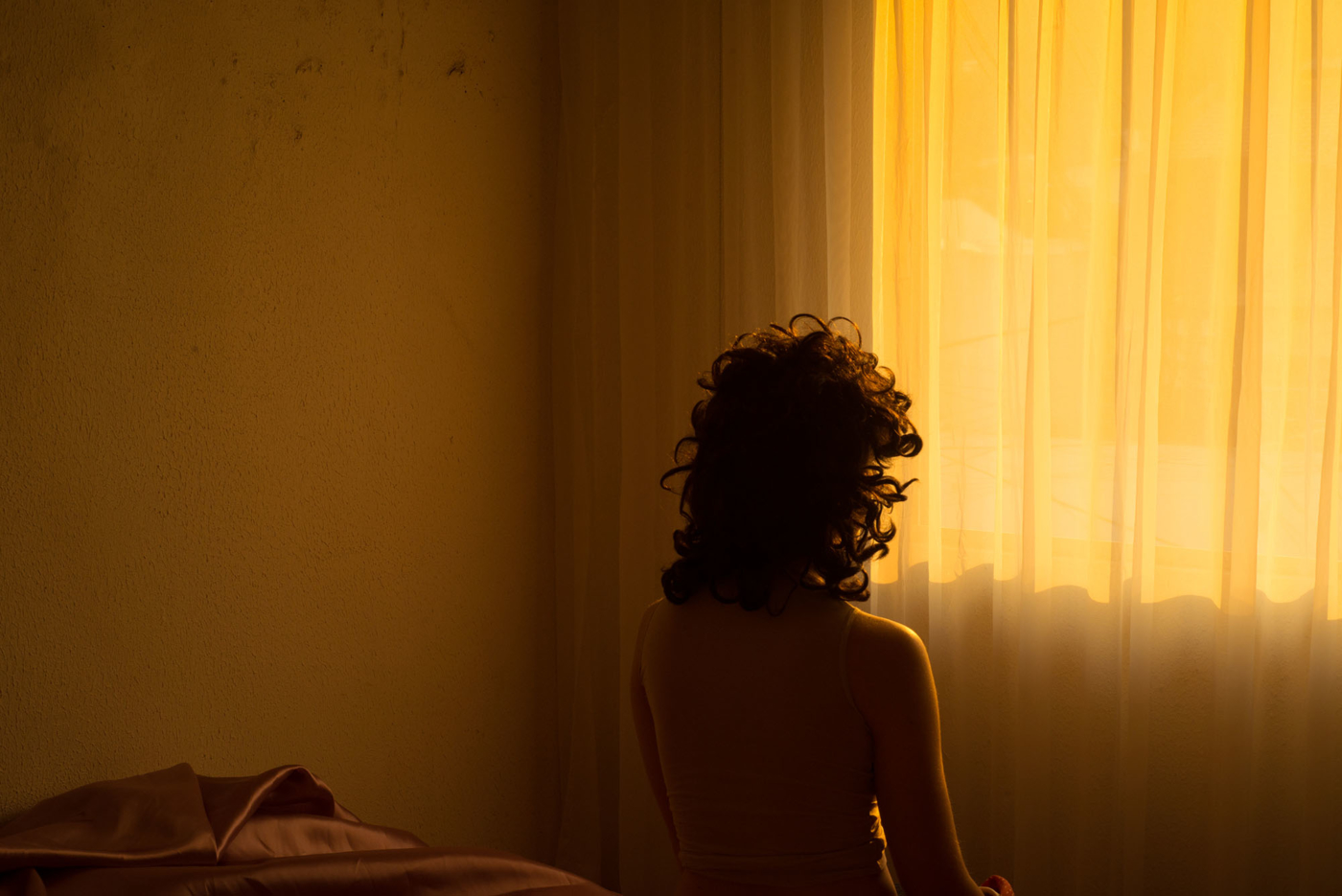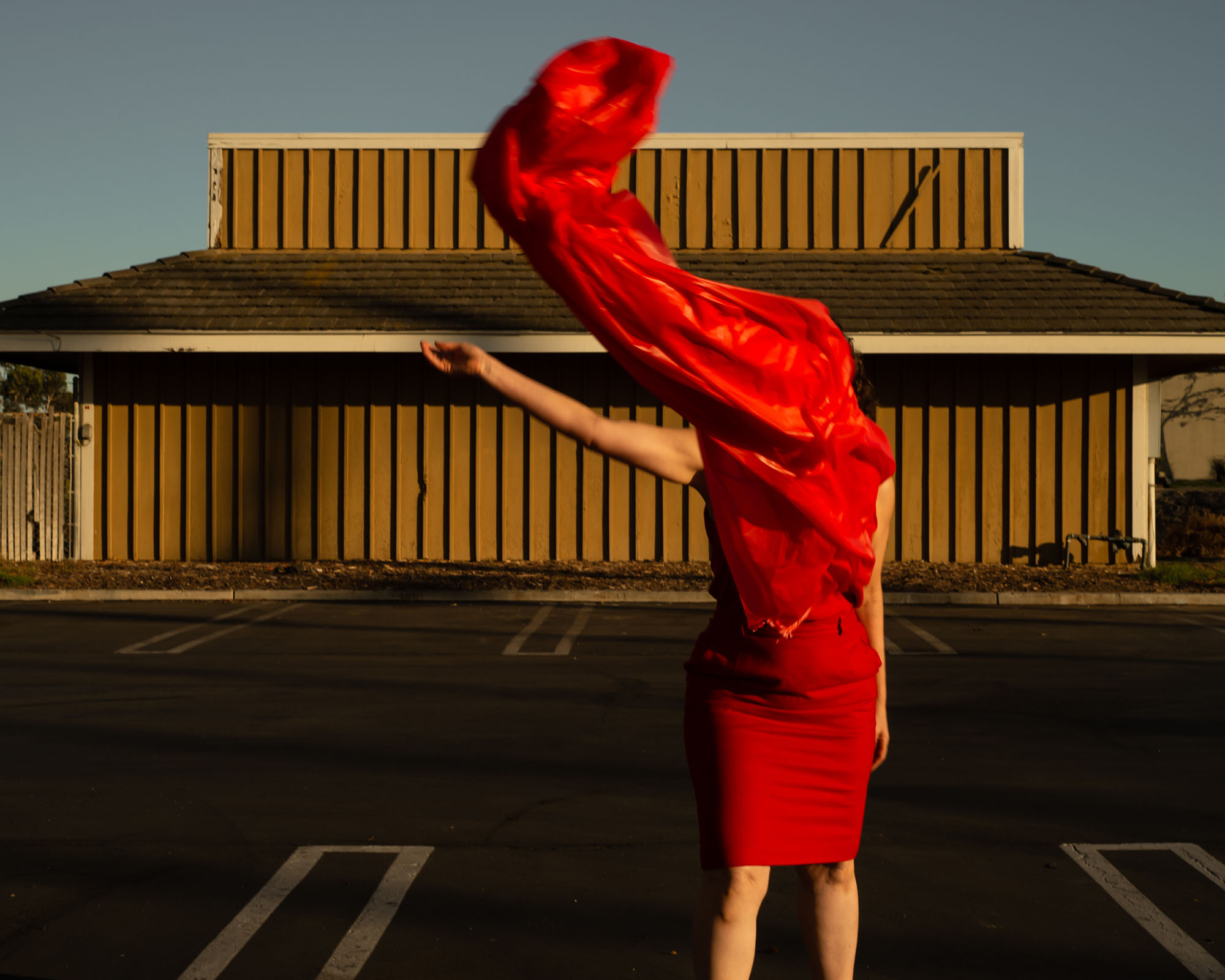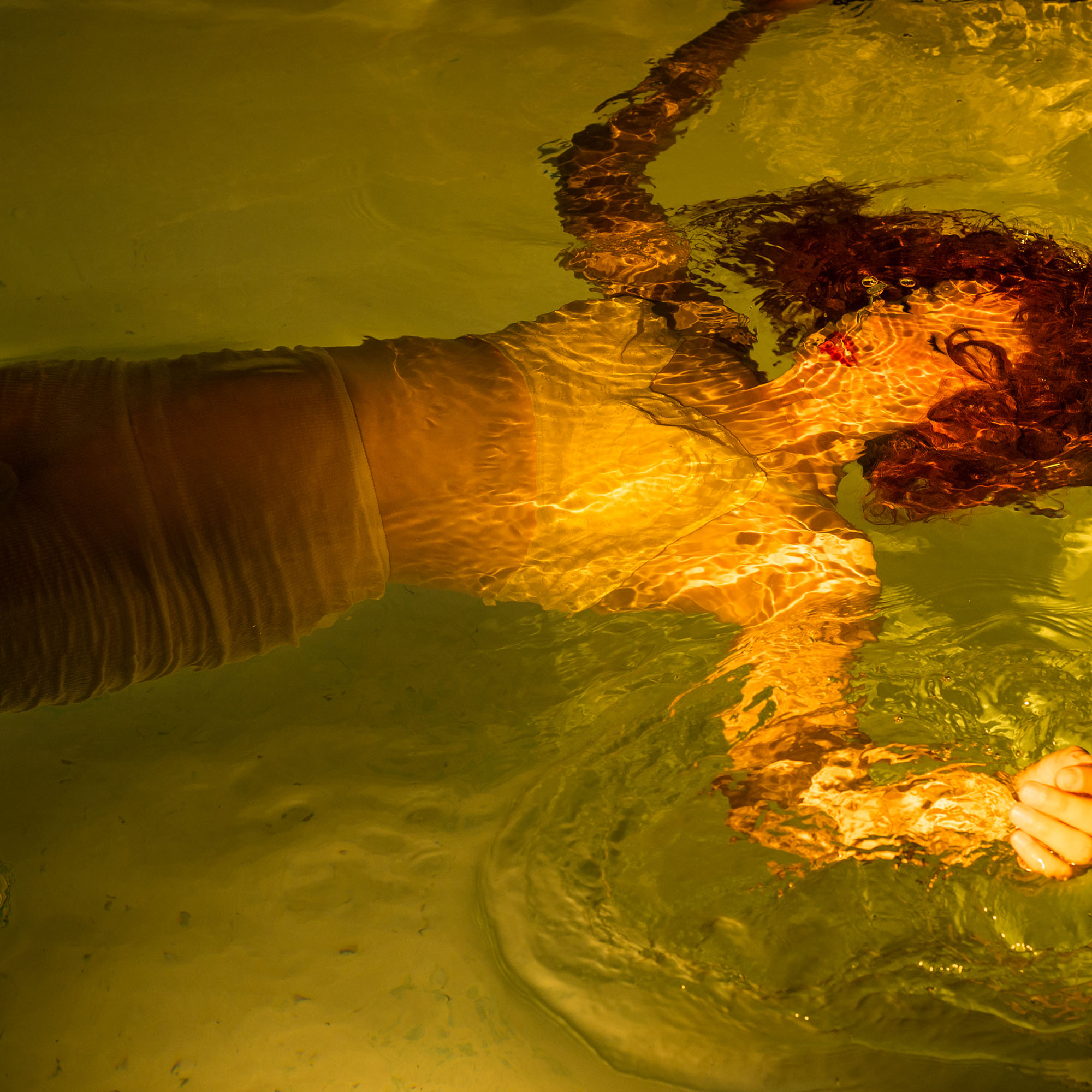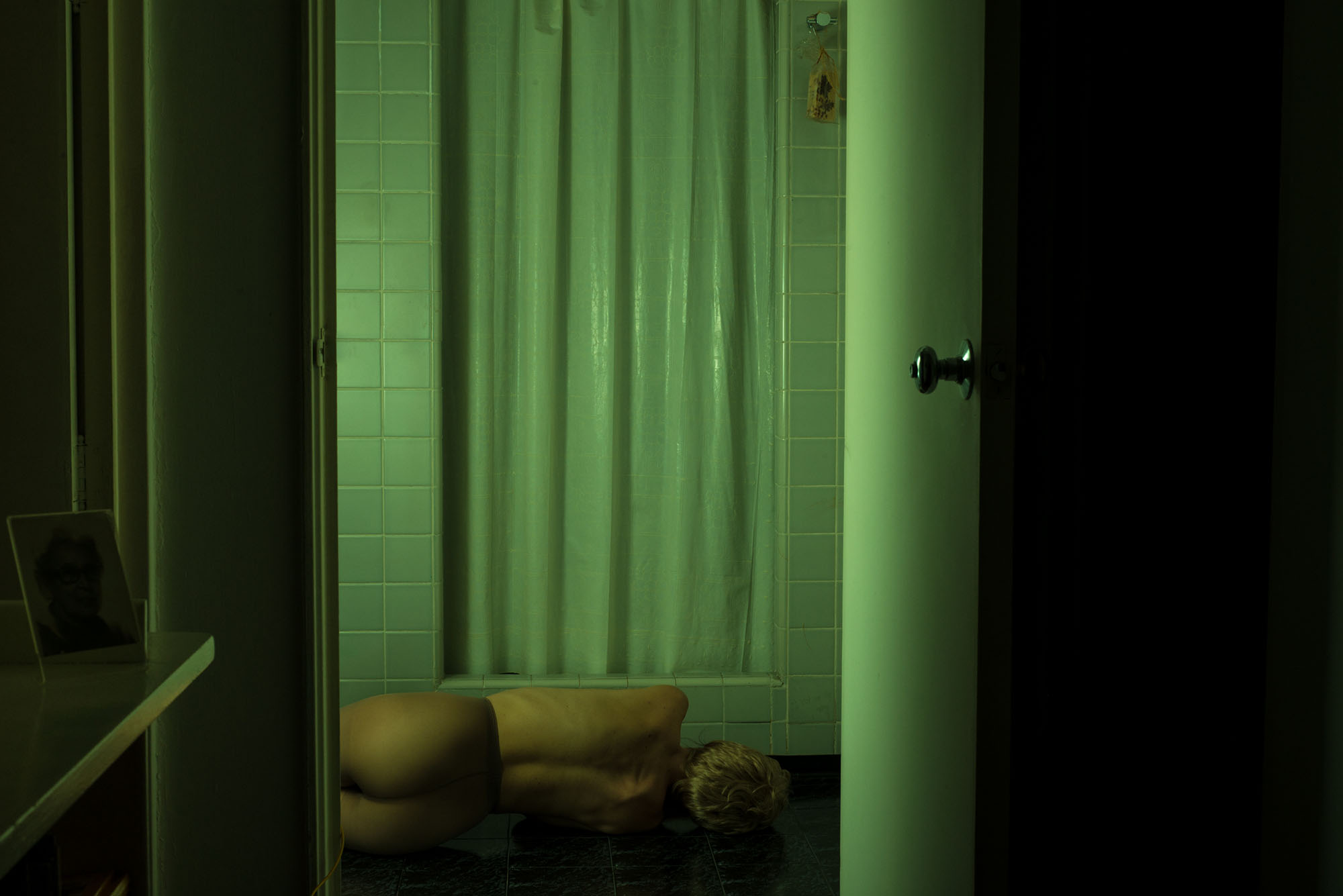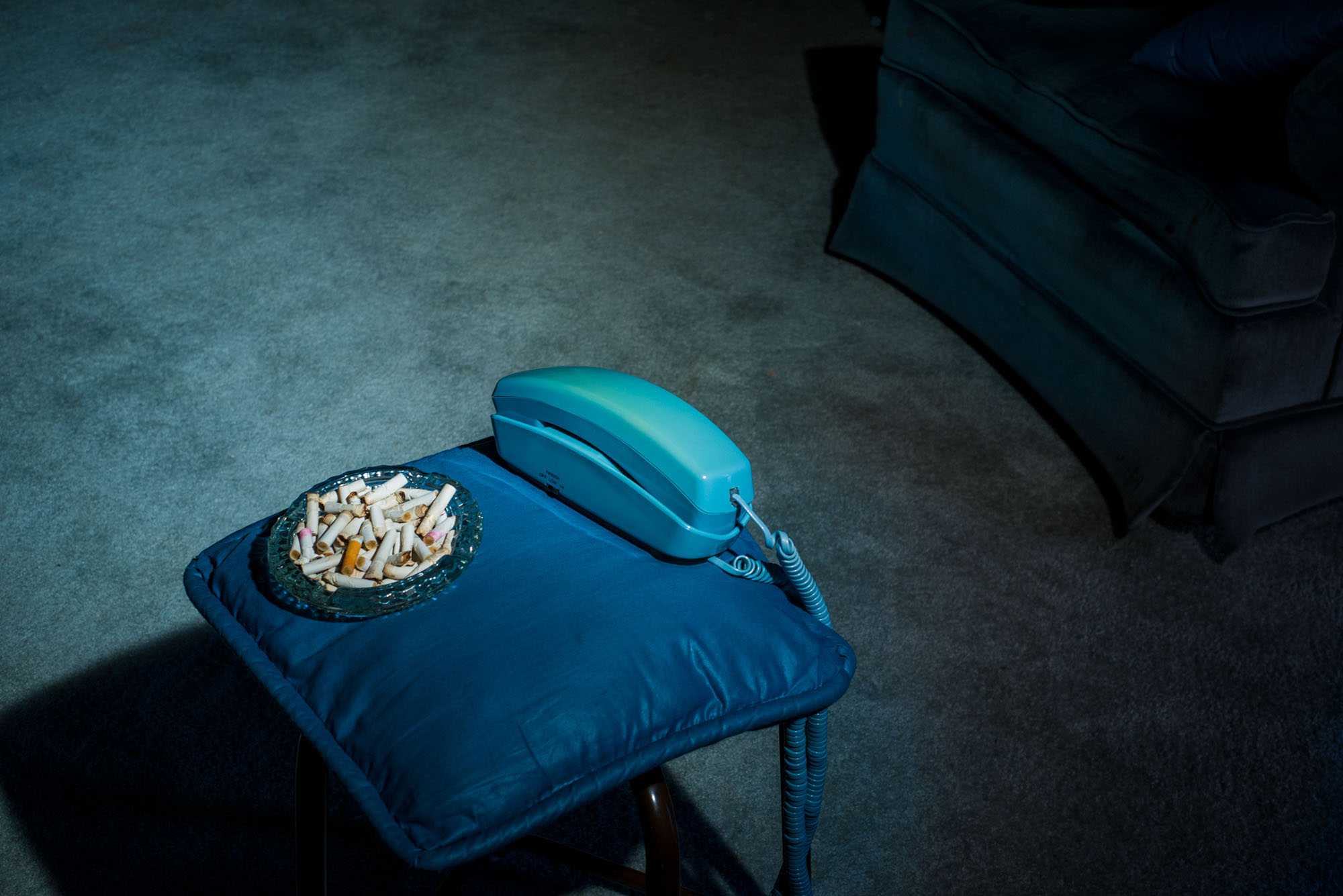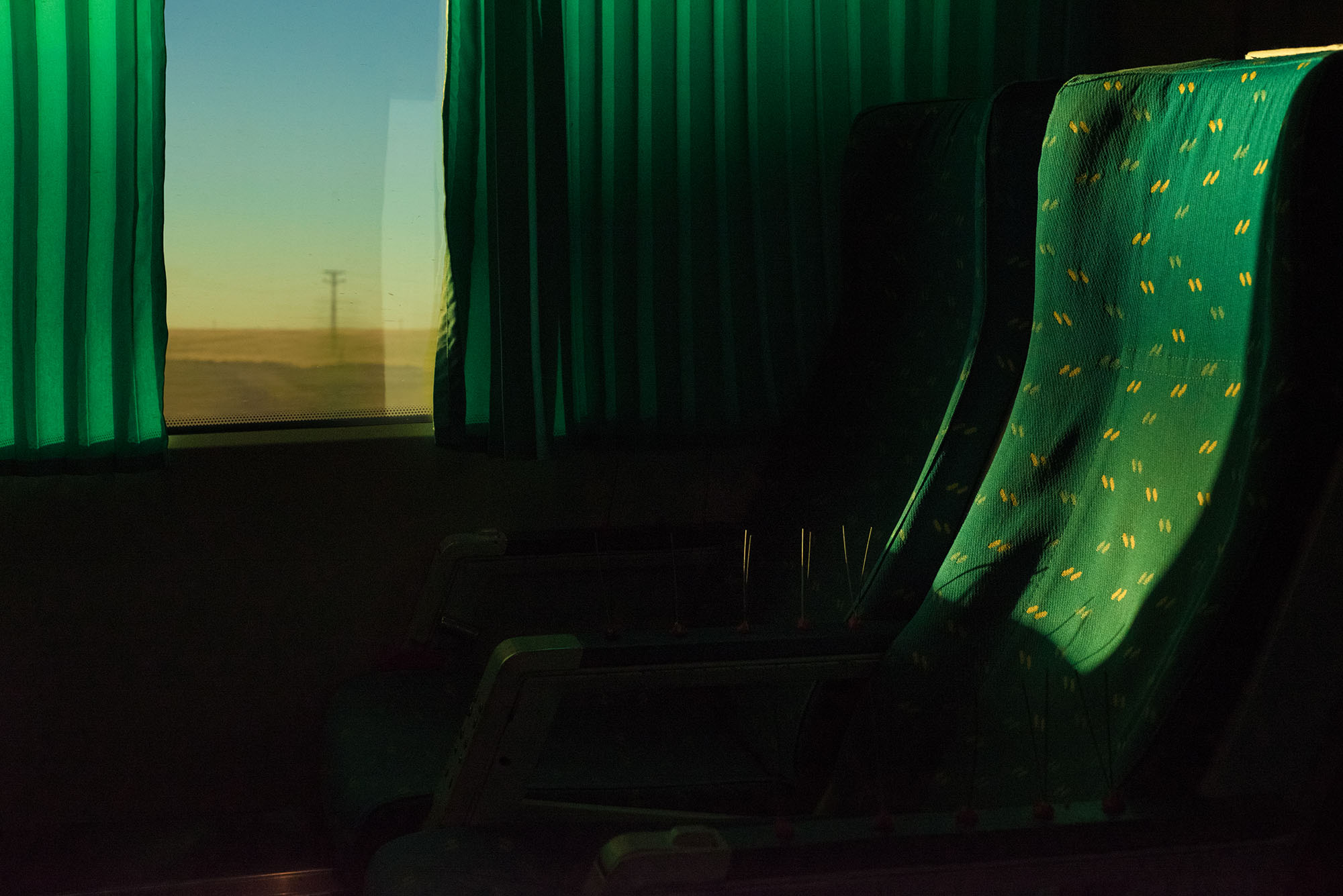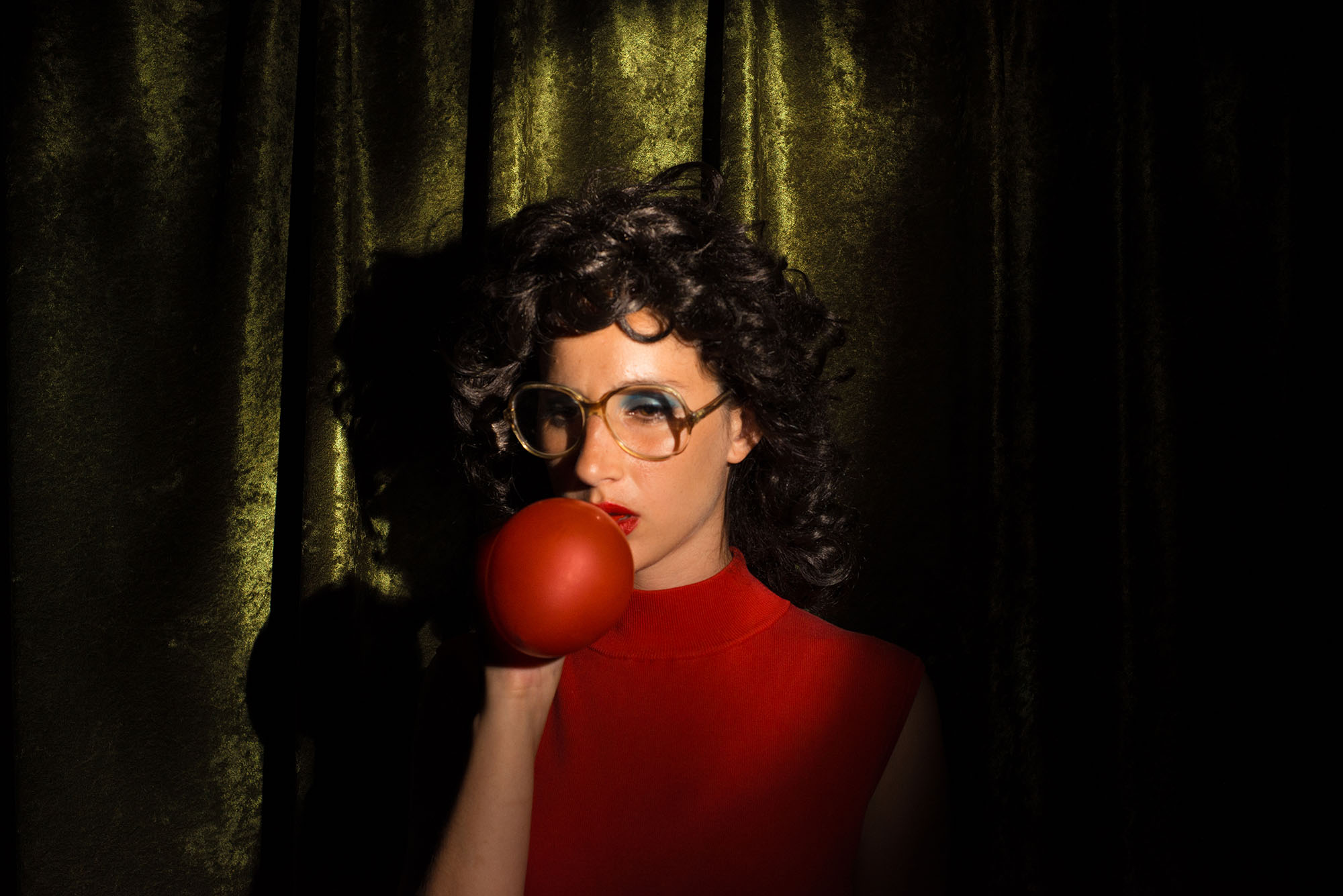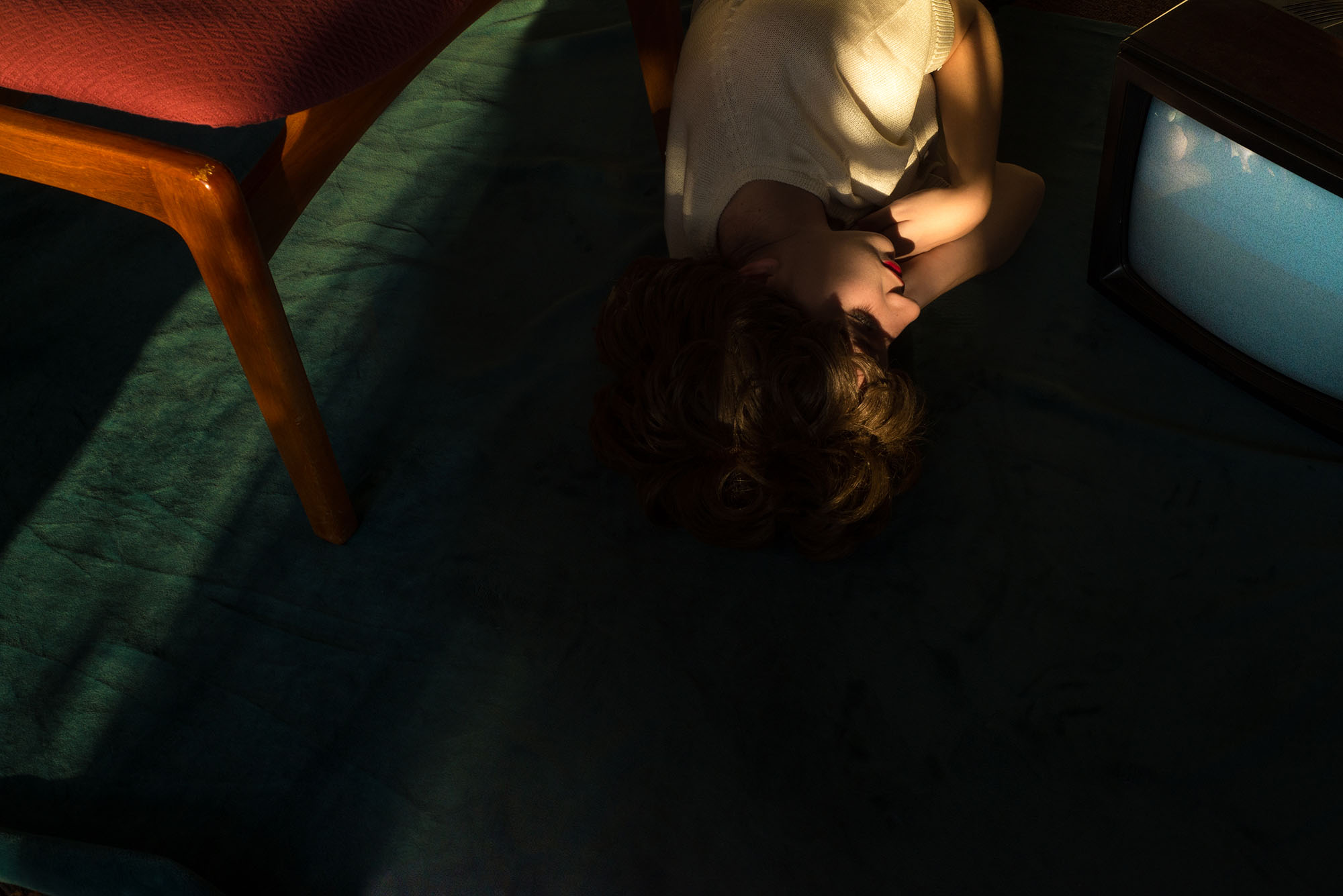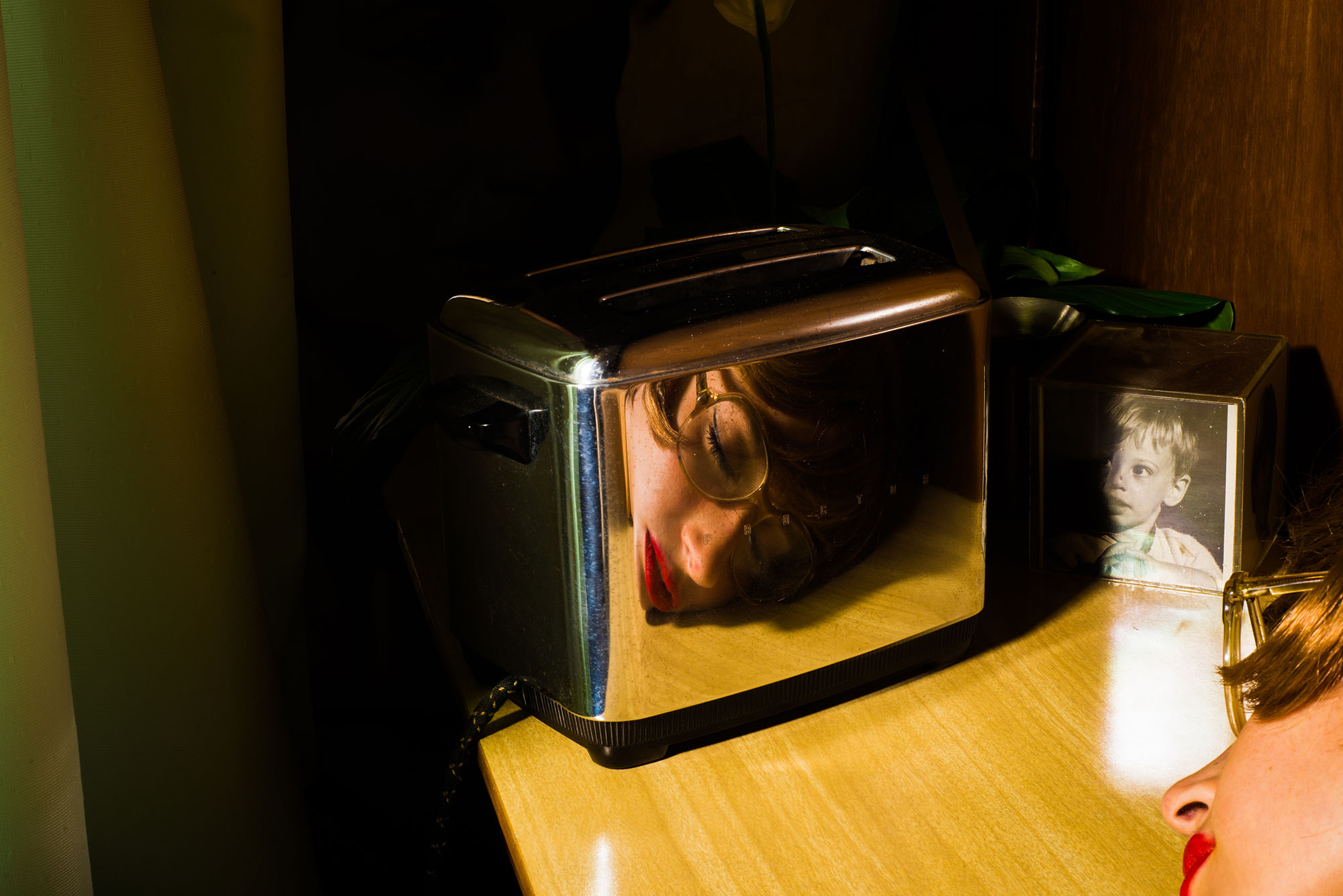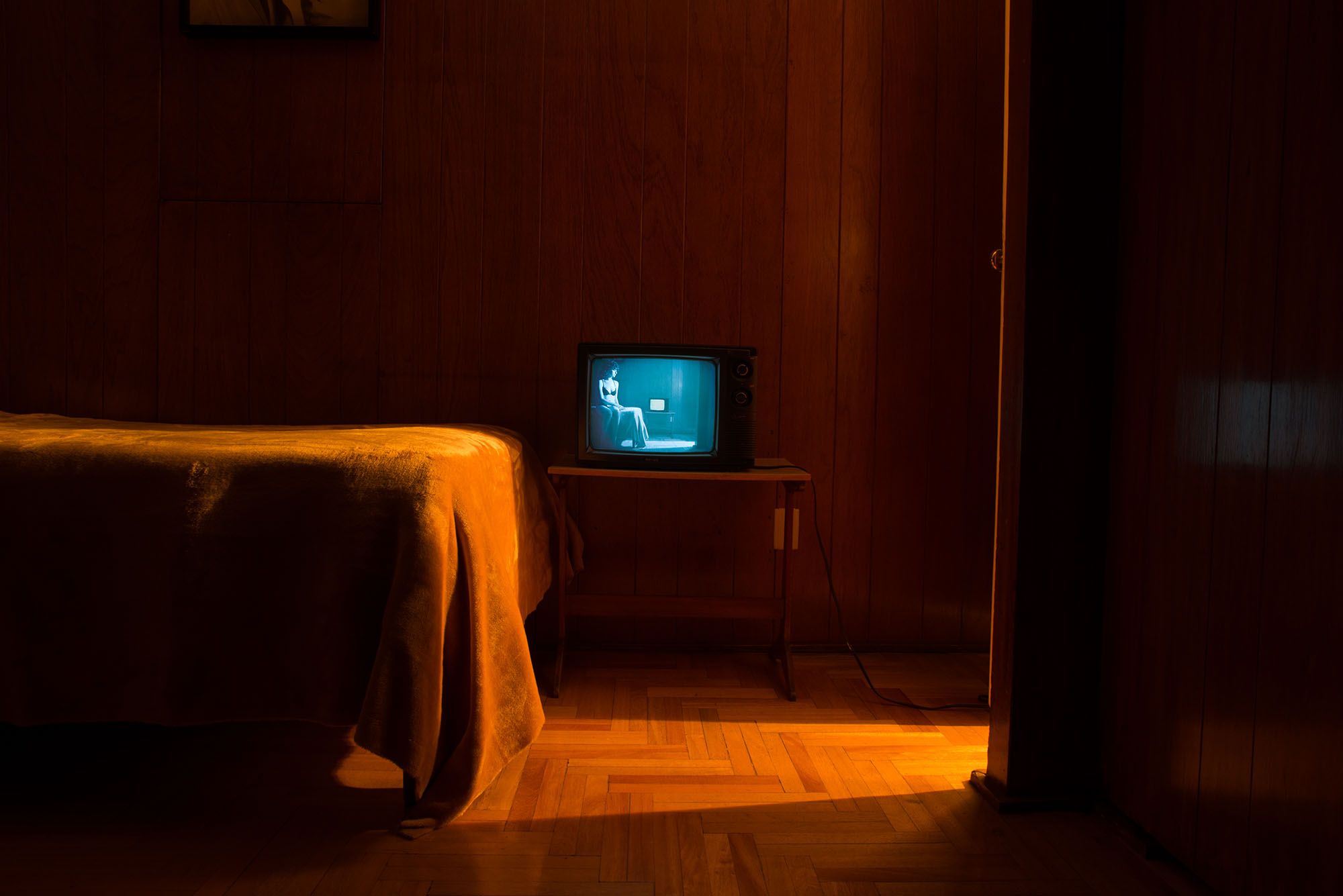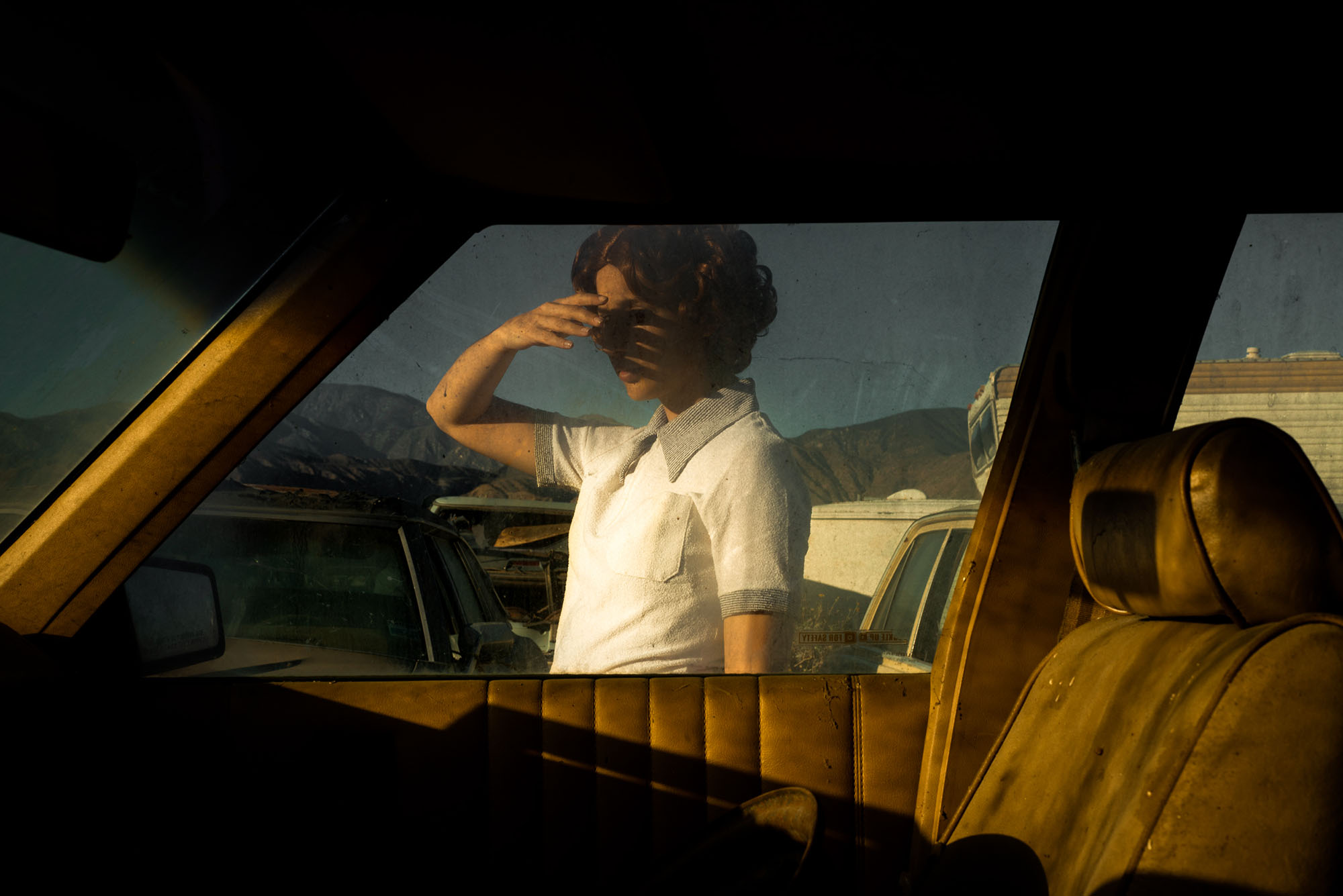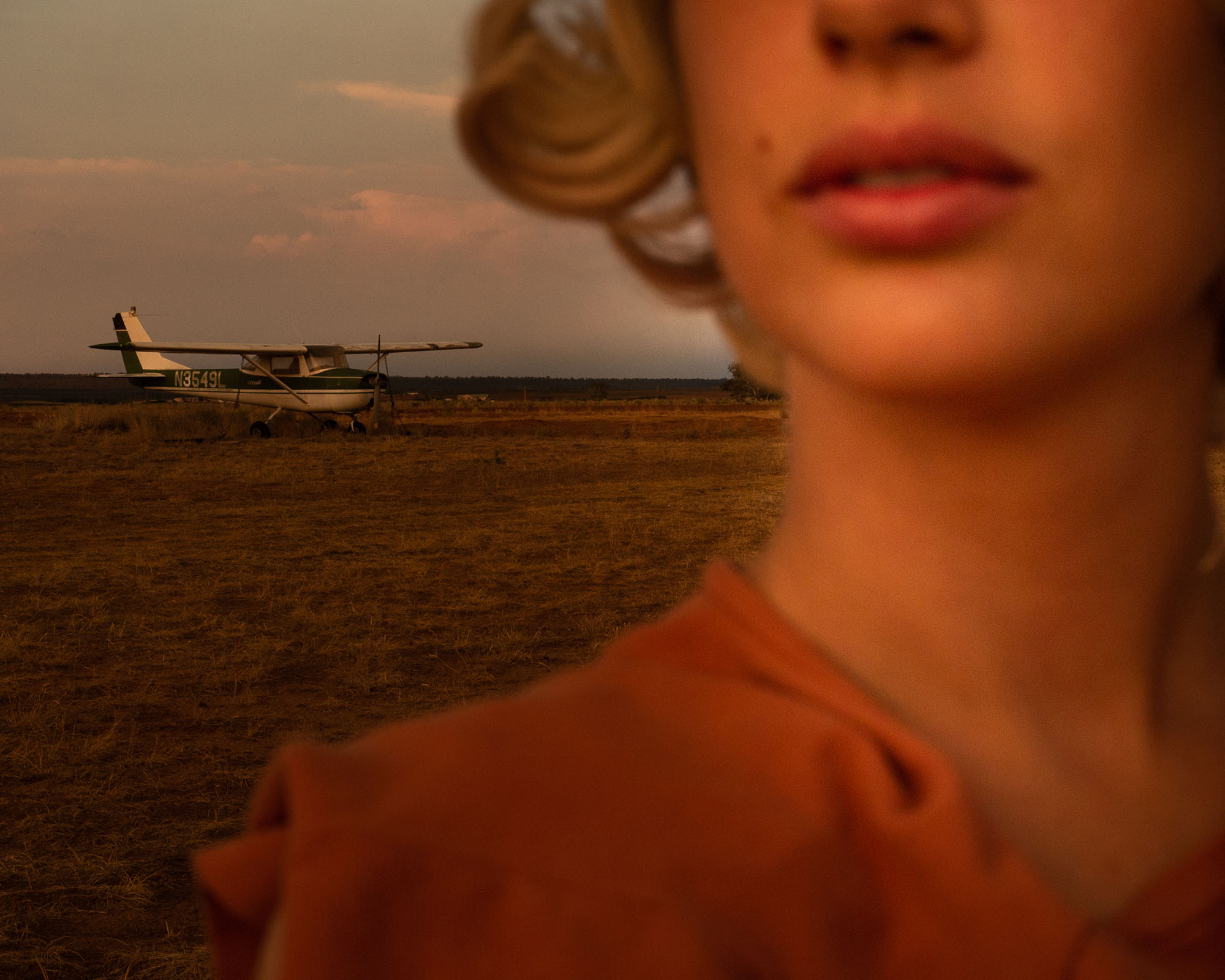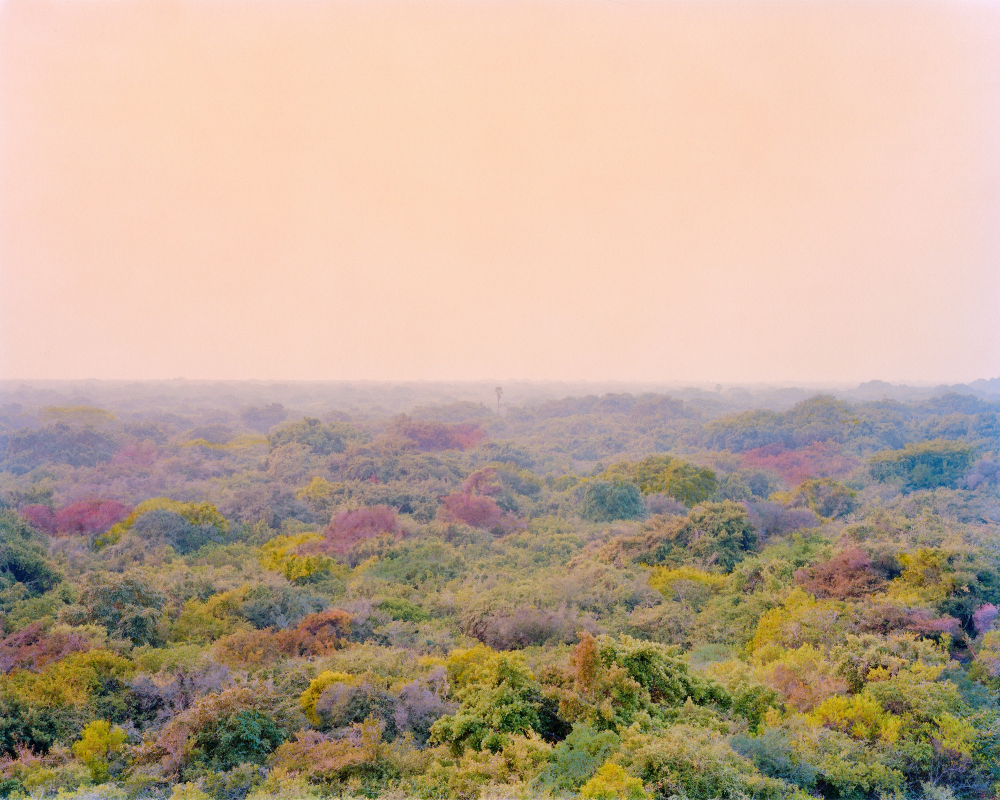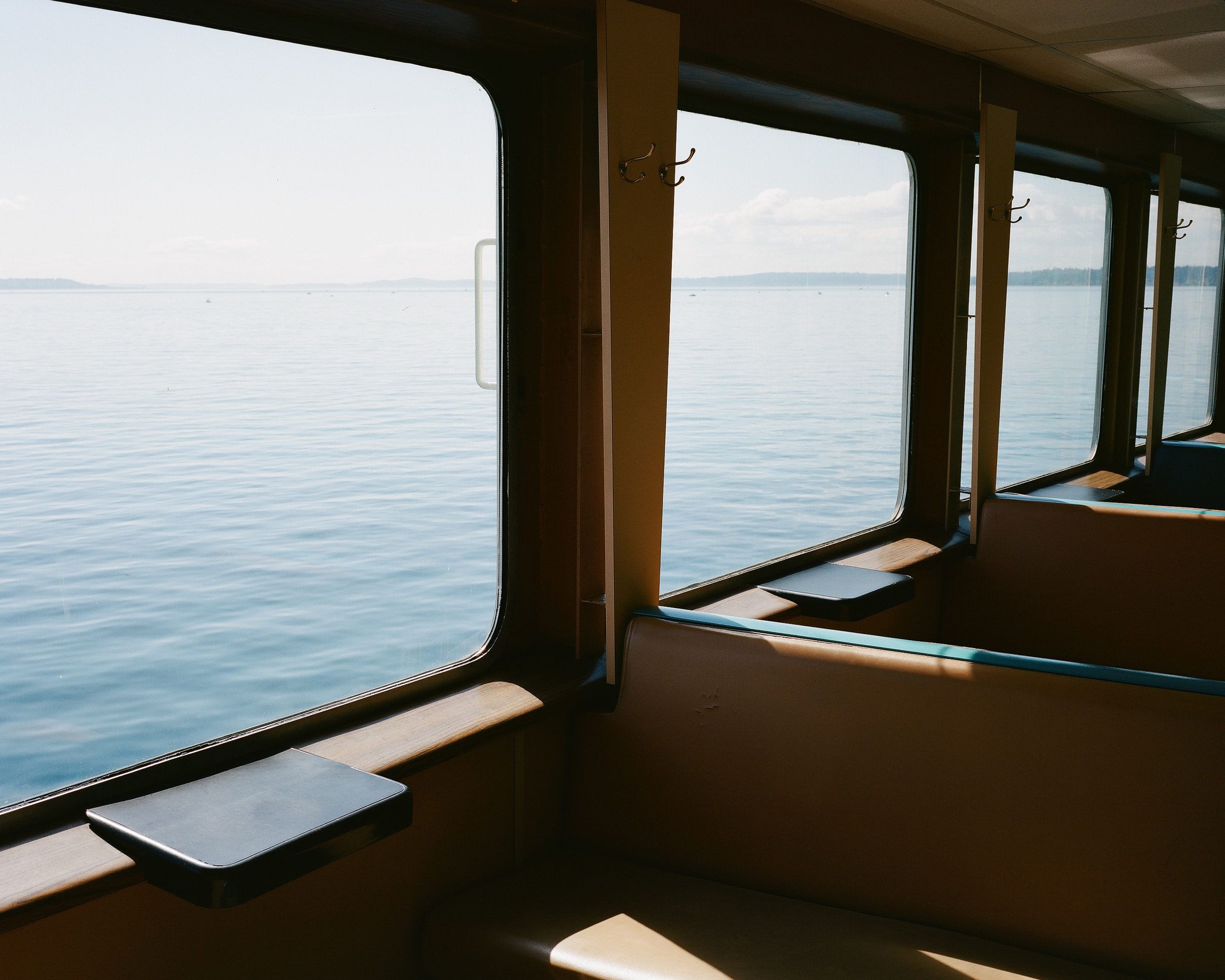W Magazine has recently named Tania Franco Klein one of “the 9 young photographers you should be following in 2019,” and with commissioned work for both Dior and New York Magazine under her belt, it is evident why the Mexico-born photographer has quickly made a powerful impact on the world of photography. Although her schooling and studies consisted mostly of subjects focused on the arts, she always had an affinity towards sociology and the psychological forces that sustain society. It is her ability to seamlessly capture and merge the contemporary societal issues of media consumption, desperation and isolation, with feelings steeped in nostalgia of the 50s and 60s, that sets her apart.
Franco Klein focuses heavily on set design and the re-creation of work from distinguished street photographers of the past to create her vision. However, she makes certain to incorporate a piece of herself into every project she takes on wholeheartedly.
How did you first get into photography?
I studied architecture in 2009 and I entered into a program in college where the whole first year was all art classes. Like contemporary art, image thinking, analogue photography etc…so it was kind of accidental that I had to take photography classes, and I just fell super in love with the medium. I started out in the darkroom, and I was very interested in creating things. Since I came from an architectural background, I was very interested in creating sets with spaces, feelings and light. I used photography as a medium to actually explore other parts of my interests in architecture.
After the first year, I bought a pair of lights, and started doing stuff on my own. While I was doing architecture, I was also doing photography and my love for photography and my interest for the practice grew so much that by the time I graduated, I knew I was never going to be an architect. I was like I have to be a photographer. Then after that, I did two freelance years here (Mexico City) trying to learn on my own, but photography in Mexico has a lot of limitations. It still has that very old school feel of documentation, and that idea that if you’re a photographer you have to show things of your culture. Even though I obviously appreciate those things a lot and I think they’re magnificent, I just didn’t feel like that’s what I wanted to do. So, I went to London and did a Master’s in fashion photography, which was also really funny because I never actually did anything with fashion in the program. My co-director was very flexible, and he realized I had a lot more interests. My mom is a philosopher, my brother is a philosopher, and I’ve always been interested in philosophy and sociology and the way we feel as a society in today’s world psychologically and why. So, photography became the way I started incorporating all of my interests into one.
“Pest Control” was a previous series of work that you did that won Aperture Foundation’s Instagram contest honoring renowned photographer William Eggelston. In what ways do you channel Eggelston’s aesthetic into your own work? How does he inspire you?
“Pest Control” was very much inspired by William Eggelston, but mostly street photographers. William Eggelston has a different approach– his street photography isn’t what I would call typical street photography. He obviously was documenting the ordinary and the mundane, but because of his situation and that place he was in, his photography doesn’t imply masses and cross-points. For that work, I was more inspired by Joel Meyerowitz, Harry Gruyaert, Martin Parr and Garry Winogrand.
My first personal project that I felt that was like myself was the one called Fun Fair. I was living in London and I started documenting people at the fairs and I started doing recreations of it with green screen and stuff like that. That was the first project that I felt was kind of my own. I do believe the American School of photography is my biggest influence like Stephen Shore and William Eggeleston and the way they use color and their approach to the mundane, but I feel like there’s no point if you do something that you like, and you do it the same because it’s already there. So, I always wanted to put my own interpretation.
Photography nowadays has evolved so much into the art world in the sense that you don’t have to take random photos. You’re always trying to create projects or a voice as a photographer. I want to incorporate things that are very important to me in the contemporary world like solitude, depression in society or different things that I think belong to everyday life that are unspoken. Concept is a very big part of my work. The moment comes when I have to talk about my work and then I could talk about those things, you know?
Right so your most recent exhibit “Our Life in the Shadows” is meant to relay the very contemporary themes of isolation, consumption, media overstimulation, and eternal youth, yet stylistically, your characters and set design seem ingrained in the early 60s. How does the marriage of the two eras help you ultimately create the mood you are looking for in your images?
I feel like it’s a combination of things. The first element I use is nostalgia. Nostalgia is a very big element to the human life. We always have this feeling like before it was better. You always feel like you grew up in the wrong moment, and before it was better, and I could go out in the streets and kids could play alone. You know? But at the same time, I’m very interested in publicity in the 50s, 60s and 70s. Publicity in that time had no filters at all. It’s kind of like the shaping of publicity and when capitalism and consumerism started shaping into what it is today. We always have this precious idea that the times before were perfect, but then you start looking back and realize that those are times are what led us to what we are today as a society.
We live in a very eclectic time where a lot of time periods are mixing because of different situations. For example, with Mexico maybe it’s because progress hasn’t come to a lot of people, and they’re still using the same things they had since the 60s. In other cases, it can be because of nostalgia.
Yeah for sure. I feel like that’s what’s interesting about human-beings– they always want to romanticize the past, but even in previous times we were dealing with a lot of similar issues and people don’t realize that was the case.
Sí. We tend to romanticize everything we don’t have or everything we don’t know–even with ourselves. For example, I always think that the me of 2 years ago used to do things like this or used to think this way, and I used to be so much better at this. We’re constantly romanticizing everything that falls into things we can’t see anymore. I think that’s very interesting because that shapes everything we do and everything we are and it’s wrong. We’re constantly wrong about our ideas.
What was your thought process behind your commission with New York Magazine’s “Are We Ready for Robot Sex?”
It made me super happy. I never thought of working commercially because I feared my work had such a small niche. It was a big discovery that I could do commercial work that inspires me and takes me out of my comfort zone and it’s still myself and pushes my boundaries. Jody Quon called me– they were doing their issue on technology and obviously sex robots are a big technological thing nowadays. It was so crazy because there were so many constraints to do the shoot. The owners of the robots have their company in California, in the middle of nowhere, and they were very particular in the way they let the robots to be out of their factory. I had to find a way to do the shoot very enclosed, 20 minutes from their factory, which is hard in California because everything is very far. But to also find a way to make it interesting. So, I needed to have sets and I found this super cheap motel.
I also had all these expectations of how the robots would be, but then I realized they were kind of like big dolls– super heavy, and the only technological thing was their heads. It was very complicated. Just to have them on a post would take us like a half an hour, and to change their clothes, they would have to put them on a tripod and take their head out. They can change their sexual organs. They have these bags full of 30 penises like the size of my arm, and I tried to use the light to hide it because you don’t want it to look like a pornographic shoot. The way I work is I build sets or make an environment and from there, I improvise a lot. I don’t like things to feel posed, I want there to be a dynamic feel. I hate those photos that feel like a bad commercial of Colgate of a family sitting on a couch. So, it was very hard because I couldn’t improvise the way I usually do.
Looking back, I wish so much that I could do more commercial work like that because there’s no way to take those photographs on my own. Only if you have someone like New York Magazine taking care of everything– I just have to take care of making these sex robots look sexy [laughs].
Well you did a great job [laughs]. So, how do you approach a project differently when it comes to commission work versus your own projects? How do you still maintain that sense of yourself in everything you do?
I want to trust that whoever is approaching me is approaching me because they know I have a very particular style and they know what I’m going to do. It’s not going to be a surprise how it’s going to be colorful or have very dramatic light. With my own work, I could be super picky and re-do things and take another month to do another photo for the project, but commercial work has a constraint. They’re depending on you and you obviously want them to be happy working with you too.
You are about to release a new photo book, which will consist of a wider compilation of your latest series “Our Life in the Shadows,” and will also include a narrative of its own. What can you tell us about this new narrative? How will it differ or complete the narrative that currently exists in the series?
Most of the photos are from “Our Life in the Shadows” and the book is called Positive Disintegration. Actually, one of the photos of the book was called “Positive Disintegration” and that’s how I came up with the title. Positive Disintegration is a psychological theory that talks about how going through bad emotions is a way of being reborn. There’s a lot of denial nowadays in how we deal in what we think is negative emotions. One of them is if we are feeling depressed, what we need is to be happy. Kind of like the opposite and you’re always thinking in opposites. I feel very attracted to this theory because it talks about how if you’re going through depression what you have to do is sink yourself into those emotions more and more and more until they become healing. Our Life in the Shadows represented that for me in my life. So, Positive Disintegration was a very personal thing, and I decided to change the title for the book.
Also like I said before, media has always been very important in my work. I usually just say it in my text, but I never incorporate it. So, I decided to add these super crazy newspapers from the 50s and 60s that are like babies drinking soda, doctors recommending to smoke, and people recommending that your television is the best way to educate your children, which nowadays is still there, but it’s more subtle because publicity has become so smart and such a thing of its own that these things are so subliminal and we don’t see that they’re shaping us constantly. But before, it was so out there, and they didn’t give a shit. There are cutouts that you feel are like real newspapers that are constantly coming out in the book. It changes the whole narrative a lot because it’s not just the photos. I didn’t want the book to just be a catalogue, and I also didn’t want it to be just a narrative of “she’s entering” and then, “she’s depressed,” you know? I hate when people try to give a linear narrative to my work because I just feel it all exists at the same time. There’s no beginning and there’s no end. It’s just one period of someone’s intense psychological moment.
That’s true with life because emotions are never one directional. It’s a back and forth type of thing.
Literally. I was taking a lot of workshops with editors and it was super hard for me explain that because people always want to make narratives out of my work because that’s the natural thing to do. I wanted a narrative that was dynamic and less focused on a story and more focused on feelings.
That’s awesome, I’m so excited to see it. When does it get published?
It’s being printed and I’m working with a French editor. I really like him because when we met, I already had all my book done, which is very unusual. You usually work with the editor a lot. But in this case, I did it on my own with a lot of help from tutors and designers and stuff. I was very worried to find a publisher that would say you need to change everything, but I was very lucky because he gave me all of freedom. I think it’s going to be released by April.
What is next for you?
Right now, I’m opening an exhibition on Tuesday (February 5, 2019) in Mexico City. We have a very big art fair here called Zonamaco. Everyone is in Mexico this week, all of the huge galleries come and it’s like this cultural week in Mexico. Having this exhibition at the same time is very cool because all of the directors of the museums and curators from all over the world are here. I’m opening with a few photos from a new body of work.
I feel like being an artist is like a 24-7 job and it’s not only about doing art. It’s a lot of promoting and all of that. Last year was a lot of commercial work for me and a lot of promotion. I kind of want to go back to just producing without having to be on my mail 24-7 [laughs]. I hope to have the luxury to keep doing personal projects and hopefully commercial work because it’s very fun, and exhibitions. I already feel like I’m doing what I want, so just got to keep doing it.
Text by Dari Kreitenberg
Find out more about Tania Franco Klein on Instagram.

